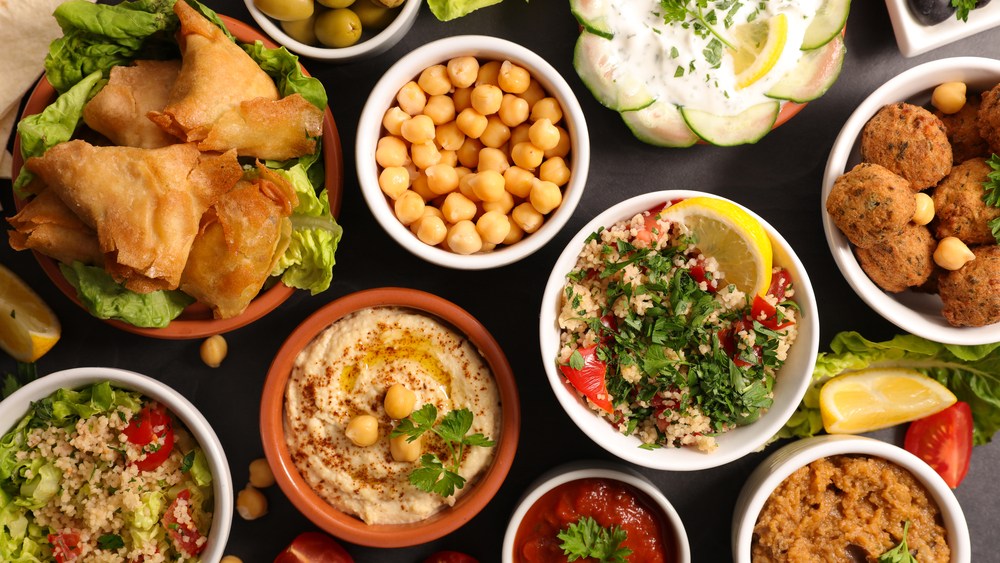

Known for its complex blend of flavours and fragrant spices, Lebanese food has earned its spot on the global culinary scene for its mouthwatering and varied offerings. Lebanese cuisine has taken the world by storm, appearing in everything from upscale restaurants to lively street markets.
In this article, we'll dive into learning more about traditional Lebanese foods, examining the rich history contributing to the cuisine's unique mezze of flavours.
Lebanese cuisine tantalises the senses with its blend of Mediterranean colours, textures, and fiery Arabic flavours. Each bite expands the palate's exploration of flavour possibilities. Here are some of the most famous traditional Lebanese Foods:
Kibbeh is a popular dish in Lebanese cuisine. It's made with bulgur, spices, and raw meat that has been finely crushed. If you're interested in trying something new, you should sample kibbeh nayyeh - you'll experience a delightful combination of different flavours and textures.
Falafel is a famous Lebanese street food. It's made from ground chickpeas, fava beans, or both and is typically served as a deep-fried ball or patty. To enjoy it at its best, you can have as part of a pita bread sandwich with veggies or alongside tarator, a mix of lemon juice and tahini paste.
Tabbouleh is a salad made using bulgur, tomatoes, onions, parsley and mint. It's a tasty dish that can be eaten any time of day and is usually served with a buffet of appetisers called mezze. To make it, finely chop all of the ingredients, combine them, and drizzle a generous amount of lemon juice and olive oil all over.
Lebanese Shawarma is a well-known street food in Lebanon. It is made by roasting thin slices of lamb, beef, chicken, or other meats on a vertical rotisserie. The meat is stacked in a cone-shaped manner and slowly cooked in order to bring out the best flavour. Shawarma is similar to Greek Gyros and Turkish Doner, a popular dish in Lebanon.
Did you know that the word "shawarma" actually means "meat" and not the name of the sandwich? Fun fact!
Hummus is a popular dish that originated from the Levantine region, and it is enjoyed worldwide. It is a dip made from chickpeas, lemon juice, garlic, and tahini paste. It is a delicious and savoury dish that pairs well with different foods. You can spread it over khuboos bread or serve it as a side dish with grilled meat or chicken. It can also be used as a dip for cooked or raw vegetables.
Only expect the best and freshest when it comes to fattoush. This dish is made up of crunchy lettuce, deep-fried bread (much like croutons), and a beautiful array of crunchy and fresh vegetables. It is excellent for people who want to eat healthy without compromising on taste
Lebanon is known for its mouthwatering desserts that satisfy every taste. The most common ones are:
The nation loves this well-known cheese dish from Lebanon. It is widely found in dessert stores in Lebanon. The meal consists of cheese flatbread and semolina, with Ashta cream inside. It is served with Ashta on top, either folded into little rolls or shaped like tiny ropes. Halewit El Jeben is topped with rose petal jam and crumbled pistachios before serving.
Known as Basbousa in various Levantine locales, namoura is a sweet and hearty Lebanese dish. The cake base is a blend of sugar, semolina, and butter. It's spread out on a large round sheet and sprinkled with almonds before baking. It is dotted with flavorful sugar after baking. Ultimately, it is sliced into diamond-shaped pieces and served with sugar syrup, one piece at a time.
It's difficult to single out one dish as the most popular, but kibbeh stands out. Although kibbeh can take many forms, kibbeh nayyeh, made with finely ground raw meat—typically lamb or beef—mixed with bulgur, spices, and herbs, is the most well-known. It's frequently served with pita bread and fresh veggies, which results in a delicious fusion of flavours and textures.
Ibn Battuta Mall is ideal for individuals eager to experience Lebanese traditional foods firsthand because the spirit of exploration and discovery is alive there. In addition to being a place to shop, the mall is a crossroads of cultures that offers a culinary adventure modelled after Ibn Battuta's historical travels.
Whether you're searching for the ideal kibbeh, relishing the creamy elegance of hummus, or indulging in the crispy joys of falafel. Discover, sample, and lose yourself in this lively dining and retail destination's medley of flavours.
Share this article Share
Share this article Share
